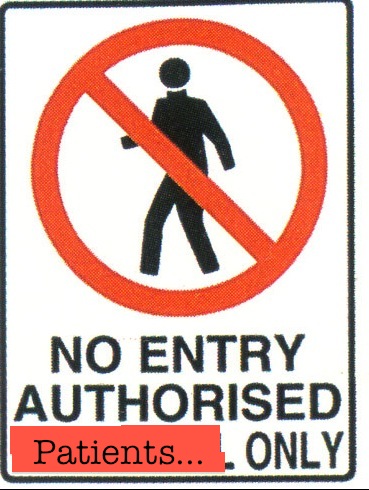 Kane Guthrie tweeted (I never thought I’d find a use for that word) this the other day and I figured it was worth commenting on.
Kane Guthrie tweeted (I never thought I’d find a use for that word) this the other day and I figured it was worth commenting on.
A hospital in the US is trying to deal with bed shortages and spiralling costs by rethinking who gets into their ICUs. I suspect this is long overdue.
If I understand the system, you get put in an ICU if the doc looking after you (on the ward or in the ED) decides that you need one. And it seems a lot of these decisions are based on the diagnosis and not necessarily a real clinical need. (though I might be wrong on that).
This stands in sharp contrast to practice I’ve observed both in Ireland and in New Zealand.
You get into the ICU on the basis of a discussion/negotiation between the person looking after the patient and the intensivists. At the end of the day the intensivists get the final word.
They describe this as a closed system in the article.
Here are some pros and cons to a closed system:
Pros:
- another, potentially more useful specialty (the intensivists) get involved in the patients care, and when you’ve got a real sickie they save your ass (and just maybe the patients)
- patients seem more likely to get in out of a genuine need rather than just having the label of say, DKA
- if you’re working as an intensivist then you get to give the drugs you want to give the way you want to give them
- on the ED side it can be a frustrating, difficult and sometimes heated discussion to get the patient admitted, you can be left with an intubated patient no-one is willing to take (more on that later)
- sometimes borderline patients go to the ward and not the unit because there’s not space. Admission criteria differ based on the occupancy, this is an inevitable but unfortunate reality. And it’s important to note that this may well happen in an “open” system and it’ll be you making that call not the intensivist
- if you’re the admitting medical team, the ICU team might do all kinds of shit you’d rather not. The old controversy like fluid management in DKA and oxygen use in COPD spring to mind in my experience

It never ceases to amaze me looking back at Irish emergecny and critical care from the outside (i.e. Australia) how it can still be controversial whether ED physicians in Ireland should do “their own” intubations (who “owns” an intubation? What a weird archaic concept!). The only question should be; “are we well enough trained to intubate patients who need it?” If the answer is no, then training needs to happen. If the answer is yes, then of course it is appropriate. The strange acceptance of the dictates of other critical care specialities, more than anything, demonstrates how far the Irish ED set-up has to come to be considered first world. ED needs to define itself and its scope of core business, and not be dictated to by people/services who do not have the patient in front of them. Just my tuppence. Still enjoying your blog, by the way – great stuff!
Hi Domhnall
Cheers for the comments.
I think at least in concept it’s not such a big deal as it was it’s more in systems and training that we’re not there yet. I have a few more thoughts on it that I’ll try to put down in a more cohesive form!
I know the arguments against – I met them all when I was back home locuming a few years ago in a couple of different EDs, and as I watched at least two patients trying to go down the gurgler because ED wasn’t “allowed” to intubate them, we decided to ignore that particular status quo. In any case, the anaesthetic service who were tardy arriving in both cases made their views clear, but couldn’t argue with the fact that said patients were still alive with secured airways. The patients don’t care who puts the ETT in as long as it gets in there safely and appropriately -it seems to me insane that a territorial urinating exercise should jeopardise patient care!
Pingback: The LITFL Review 021 - Life in the FastLane Medical Blog
My U.S. hospital has a closed ICU. Our intensivist decides if the patient goes to the icu or a regular floor.
Hi Joe
does it work well or Is it a fighting match to get a pt in there?